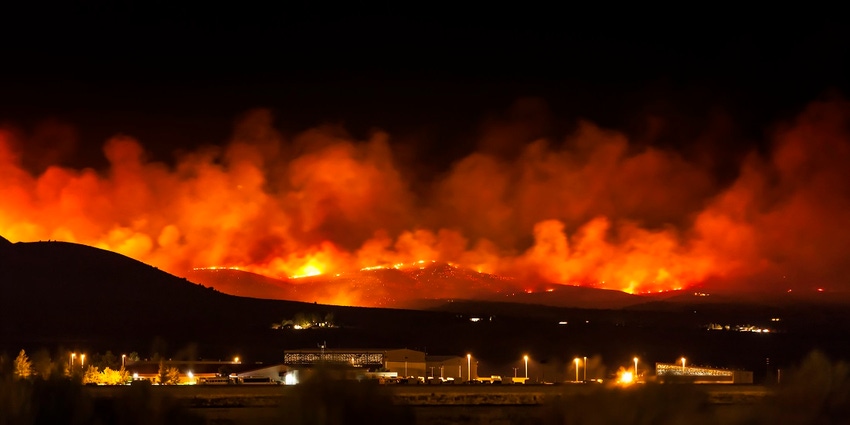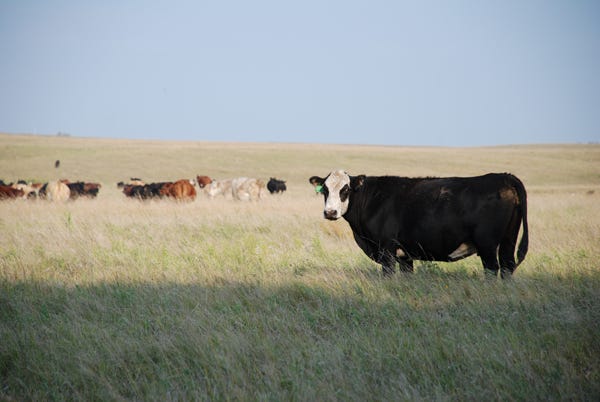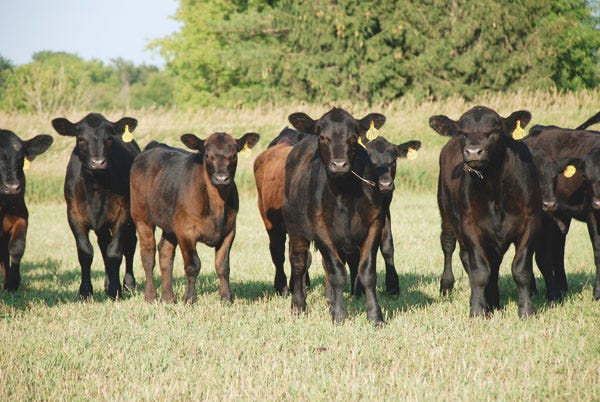While Oklahoma has suffered the most, drought and wildfires are taking a toll in other states. Plus, check out what this FFA student is doing to help kids with cancer. That and more awaits you in this week’s Trending Headlines.

Ranchers in five states devastated by drought, wildfires
“Finding hay out here in this part of the state is next to impossible,” according to rancher Darrel Shepherd of Custer, Okla., about 80 miles west of Oklahoma City. “Pastureland is really hard to find right now … the wheat, with the drought and all, the wheat is no good.”
Extreme and exceptional drought conditions have contributed to wildfires in Colorado, Kansas, Oklahoma, Texas and New Mexico, delaying the growth of or destroying grass and wheat used to feed cattle in spring. In fact, federal agriculture officials in New Mexico said ranchers may not have feed to maintain their herd sizes and that some are already trimming their herds, while farmers along the Rio Grande are bracing for less water to irrigate their crops, reports the Denver Post.
Keep grass and grazing animals in proper balance

Grass and grazing animals evolved together in symbiotic relationships — each needing the other — in various grasslands around the world. The healthiest situation is to have grazers on the land in proper balance with their feed source, reports the Angus Beef Bulletin.
“For sustainable use of ranch lands, the key things to avoid are first overstocking and then overgrazing. Some people confuse those two things. To avoid overstocking you must make sure you don’t have too many animals; that you leave enough grass to feed the animals and to perform the ecosystem functions like shading the soil, etc. You also must avoid overgrazing, which occurs when you graze too long and don’t provide enough recovery time. No matter what the conditions are, you must try to avoid those two situations,” says Richard Teague, Texas A&M AgriLife Research rangeland ecology and management scientist in Vernon, Texas.
Farm Service Agency makes administrative change to the Livestock Indemnity Program

Agricultural producers who have lost livestock to disease resulting from a weather disaster now have an additional way to become eligible for a key USDA disaster assistance program. In the event of disease, this change by USDA’s Farm Service Agency (FSA) authorizes local FSA county committees to accept veterinarian certifications that livestock deaths were directly related to adverse weather and unpreventable through good animal husbandry and management. The committees may then use this certification to allow eligibility for producers on a case-by-case basis for the Livestock Indemnity Program (LIP), reports the Southwest Farm Press.
LIP provides benefits to agricultural producers for livestock deaths in excess of normal mortality caused by adverse weather, disease or by attacks by animals reintroduced into the wild by the federal government. Eligible weather events include earthquakes, hail, tornadoes, hurricanes, storms, blizzard, and flooding. Producers interested in LIP or other USDA disaster assistance programs should contact their local USDA service center.
FFA student makes donation to St Jude’s
“In this age, people are so self-centered and always looking out for only themselves,” said Sara Parker, a senior and member of Calaveras, Calif., FFA. “I personally find more joy in helping someone in need than helping myself, and this is the best way for me to give joy to someone that needs some good news in their life.”
This year, Parker decided to take half the proceeds she raises from selling her prized steer “Sunshine” at the Junior Livestock Auction at the Calaveras County Fair and donate it to St. Jude Children’s Research Hospital. She’s even set up a GoFundMe to help support her cause reports AgDaily.
Moderate grazing repairs soils

Decades of plowing throughout the Piedmont region of the Southeast and Eastern United States have degraded the soil, allowing much of it to be washed away, and robbing what is left of nutrients and organic matter. Sorghum, cotton, soybean, and wheat are still widely grown in the region, which stretches all the way from Alabama to New Jersey. But because the soil is so degraded, growers have allowed much of the land to revert to forests and pastures.
But is that the best way to improve the soil? That’s the question that Alan Franzluebbers, an Agricultural Research Service ecologist, decided to address: “Growers need guidance on whether leaving the land unused is the best way to restore degraded soils or whether allowing cattle to graze on it is a viable option.”
In the end, the team discovered that the idea that grazing is worse than leaving the land unused if false. If producers manage cattle so that pastures are grazed moderately, they’re actually restoring soil quality.
USDA to allow modified FMD virus into U.S. for vaccine development
In an effort to allow continued research and vaccine development, USDA has approved the movement of a modified, non-infectious version of the foot and mouth disease (FMD) virus from the Plum Island Animal Disease Center to the U.S. mainland. The action was approved by Ag Secretary Sonny Perdue. While modified FMD virus is unable to cause disease and presents no risk of transmitting the disease, it is still live FMD virus, and federal law requires the Secretary's approval for this movement.
In order to protect our nation's livestock, the live FMD virus was previously not allowed anywhere in the country except for the Plum Island Animal Disease Center, where it was held and worked with under very strict biocontainment procedures. However, with advances in technology, it is now possible to genetically modify the virus so that it is non-infectious. With this added protection, it is now possible to allow vaccine development within the U.S., rather than relying upon overseas sources, according to USDA.
About the Author(s)
You May Also Like



